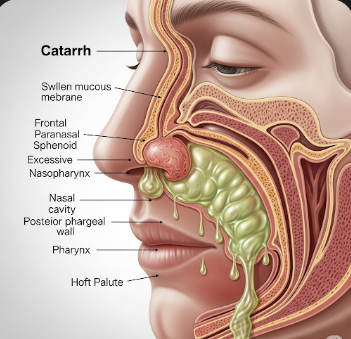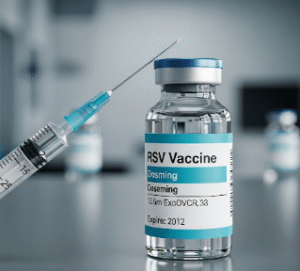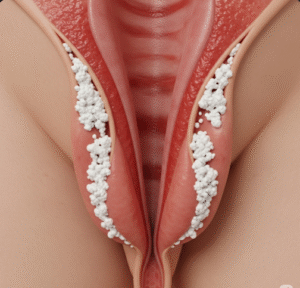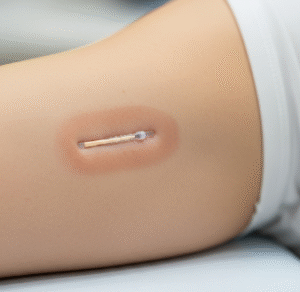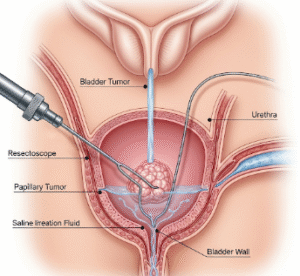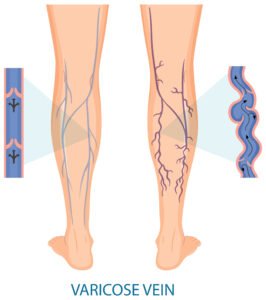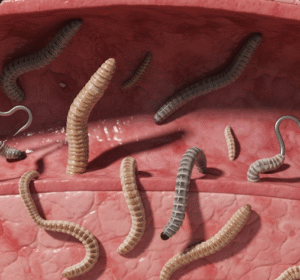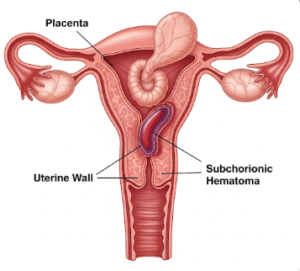Overview
Catarrh is a condition characterized by excessive mucus buildup in the nose, throat, or sinuses, often associated with inflammation of the mucous membranes. It is commonly seen in respiratory infections, allergies, or chronic sinus conditions. While often temporary, persistent catarrh may signal underlying sinusitis, allergies, or other respiratory disorders.
In South Korea, ENT (ear, nose, and throat) clinics and respiratory care centers provide comprehensive evaluation and treatment for catarrh, combining diagnostic imaging, medical management, and lifestyle counseling to alleviate symptoms and prevent complications.
Key Facts
Highlights:
➡️ Catarrh is essentially the body’s response to irritation or infection, producing excess mucus to trap pathogens or allergens.
➡️ Symptoms may include nasal congestion, post-nasal drip, sore throat, cough, and difficulty breathing.
➡️ Common causes include viral infections (cold, flu), bacterial sinusitis, allergies, and environmental irritants.
➡️ Chronic catarrh can interfere with sleep, daily activities, and quality of life.
➡️ South Korea offers advanced ENT care, including endoscopic sinus evaluation, allergy testing, and minimally invasive treatments.
What is Catarrh?
Catarrh is the inflammation of mucous membranes with excessive mucus production, typically affecting the nose, sinuses, and throat.
Key characteristics:
- Mucus Buildup: Thick, sticky mucus in the nasal passages or throat
- Inflammation: Swelling of the mucous membranes
- Duration: Can be acute (days to weeks) or chronic (weeks to months)
- Associated Symptoms: Cough, sore throat, ear fullness, headache
Catarrh itself is a symptom rather than a disease, indicating respiratory irritation or infection.
What Symptoms are Related to Catarrh?
Symptoms commonly accompanying catarrh include:
- Runny or blocked nose
- Post-nasal drip causing throat irritation
- Cough, often worse at night
- Sore or scratchy throat
- Headache or sinus pressure
- Ear discomfort or muffled hearing
Highlights:
➡️ Catarrh can cause persistent discomfort, especially in chronic cases.
➡️ Symptoms may mimic or accompany other respiratory conditions, such as sinusitis or allergies.
➡️ Early treatment helps reduce inflammation, mucus production, and prevent complications.
What Causes / Possible Causes of Catarrh?
Highlights:
➡️ Viral Infections: Common cold or flu often triggers acute catarrh.
➡️ Bacterial Sinusitis: Infection of the sinuses can lead to thick mucus and persistent congestion.
➡️ Allergies: Hay fever or environmental allergens cause immune-mediated mucus overproduction.
➡️ Environmental Irritants: Smoke, dust, pollution, and chemical fumes can inflame mucous membranes.
➡️ Structural Issues: Deviated septum or nasal polyps may contribute to chronic catarrh.
➡️ Mechanism: Inflammation of the mucous membranes stimulates goblet cells to secrete excess mucus, leading to congestion and discomfort.
When Should I See My Doctor?
Highlights:
➡️ If catarrh persists beyond 10–14 days without improvement.
➡️ If accompanied by high fever, severe headache, facial swelling, or vision changes, urgent medical evaluation is required.
➡️ For chronic or recurrent catarrh, ENT consultation is recommended to identify underlying sinus, allergy, or structural issues.
➡️ If mucus is discolored (green or yellow) or contains blood, medical assessment is necessary to rule out bacterial infection.
➡️ Early consultation ensures accurate diagnosis, effective treatment, and prevention of complications like sinusitis or ear infections.
Care and Treatment
Treatment focuses on relieving symptoms, reducing inflammation, and addressing underlying causes:
Highlights:
➡️ Home Remedies and Lifestyle Measures:
- Saline nasal irrigation or sprays to clear mucus
- Steam inhalation to soothe nasal passages
- Staying hydrated to thin mucus
- Avoiding irritants such as smoke or allergens
➡️ Medications:
- Decongestants for short-term relief of nasal blockage
- Antihistamines for allergy-related catarrh
- Nasal corticosteroid sprays for chronic inflammation
- Antibiotics only if bacterial infection is confirmed
➡️ Procedural Interventions:
- Endoscopic sinus surgery for chronic sinus obstruction or polyps
- Balloon sinuplasty to improve sinus drainage in selected cases
➡️ Monitoring: Regular follow-up to track improvement, prevent recurrence, and manage underlying conditions.
Treatment Options in Korea
South Korea provides comprehensive care for catarrh, including:
Highlights:
➡️ ENT Clinics: Advanced endoscopic evaluation to detect sinus, nasal, and throat issues.
➡️ Allergy Testing and Management: Identification of allergens with targeted therapy.
➡️ Minimally Invasive Treatments: Endoscopic surgery, balloon sinuplasty, and laser treatments for chronic cases.
➡️ Multidisciplinary Care: Collaboration among ENT specialists, allergists, and pulmonologists for chronic or complicated catarrh.
➡️ Medical Tourism Support: Multilingual consultations, diagnostics, and treatment plans for international patients.
➡️ Preventive Guidance: Lifestyle adjustments, hygiene measures, and environmental controls to reduce recurrence and maintain respiratory health.

